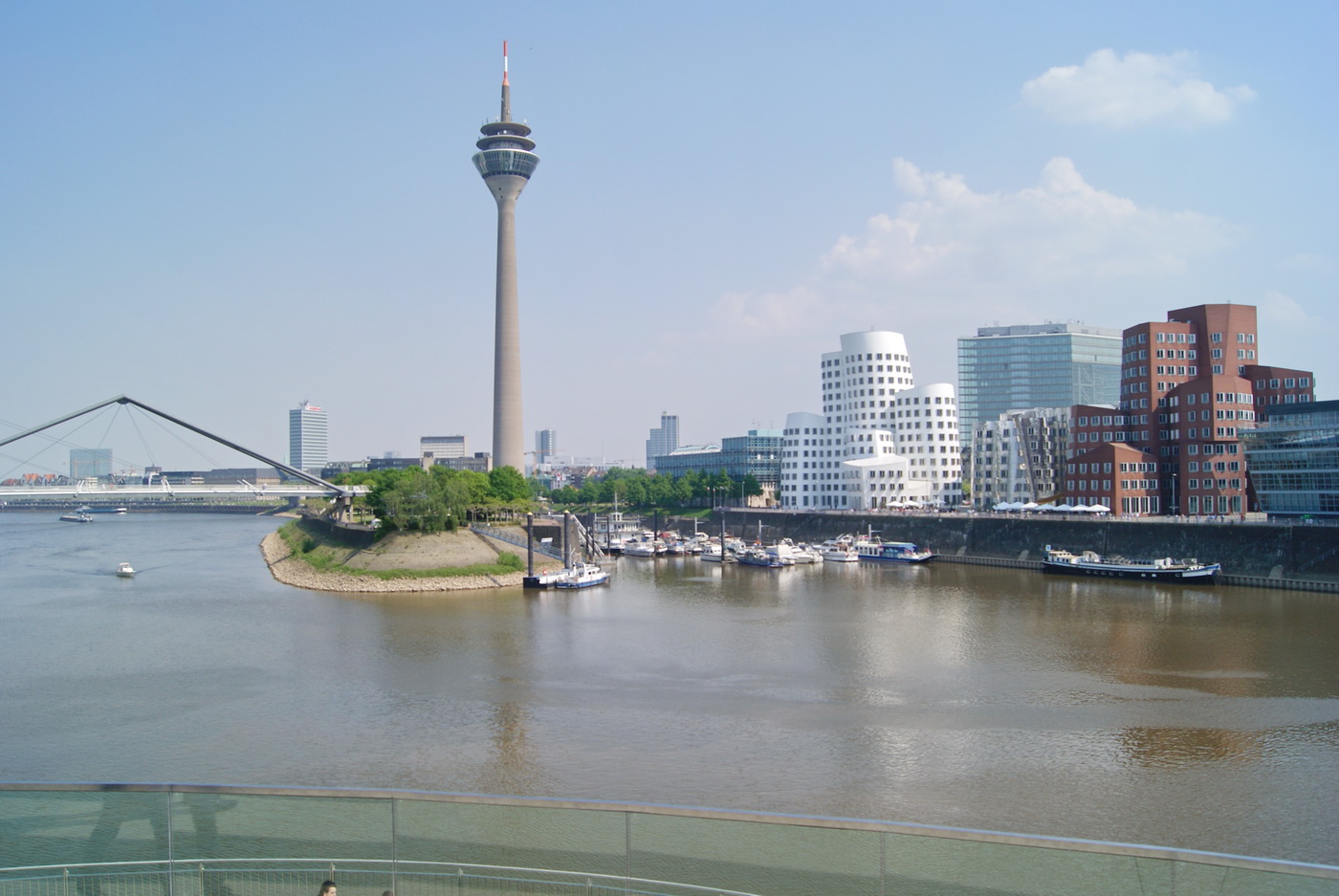

Düsseldorf is a good example of how towns undergo constant change, whole quarters acquire new uses and structures, old buildings are demolished or converted and post-modern architecture is created. This can be experienced along the right bank of the Rhine. In 1993, the Altstadt (old town) returned to the Rhine when the main road which had separated it from the river was put into an underground tunnel and an attractive promenade was created along the river bank. Walking past the parliament building and the television tower, the visitor arrives at the Medienhafen (Media Harbour). Structural change began after the harbour lost its significance as a location for transhipments and manufacturing. Ambitious new buildings and converted structures have been created here (e.g. by Holl, Chipperfield, Gehry, Coenen, Maki, Alsop and HPP) for new businesses from the media, advertising and fashion sectors. A walk around the Medienhafen is like a visit to an architecture museum where numerous restaurants invite visitors to stop for an enjoyable rest.
On the way back, it is worth visiting K21, the museum for 21st-century art. A modern glass dome indicates the new use of the old assembly building, where art took over from the state parliament of North Rhine-Westphalia as the “succeeding tenant” in 2002. It is worth enjoying the peace and quiet in the assembly building complex before plunging again into the crowds of people on shopping trips or out window-shopping on the Königsallee, one of the most famous and attractive shopping streets in Germany.
But following this, the 27-hectare Hofgarten and its various areas of parkland provide a green oasis where there is always something new waiting to be discovered.